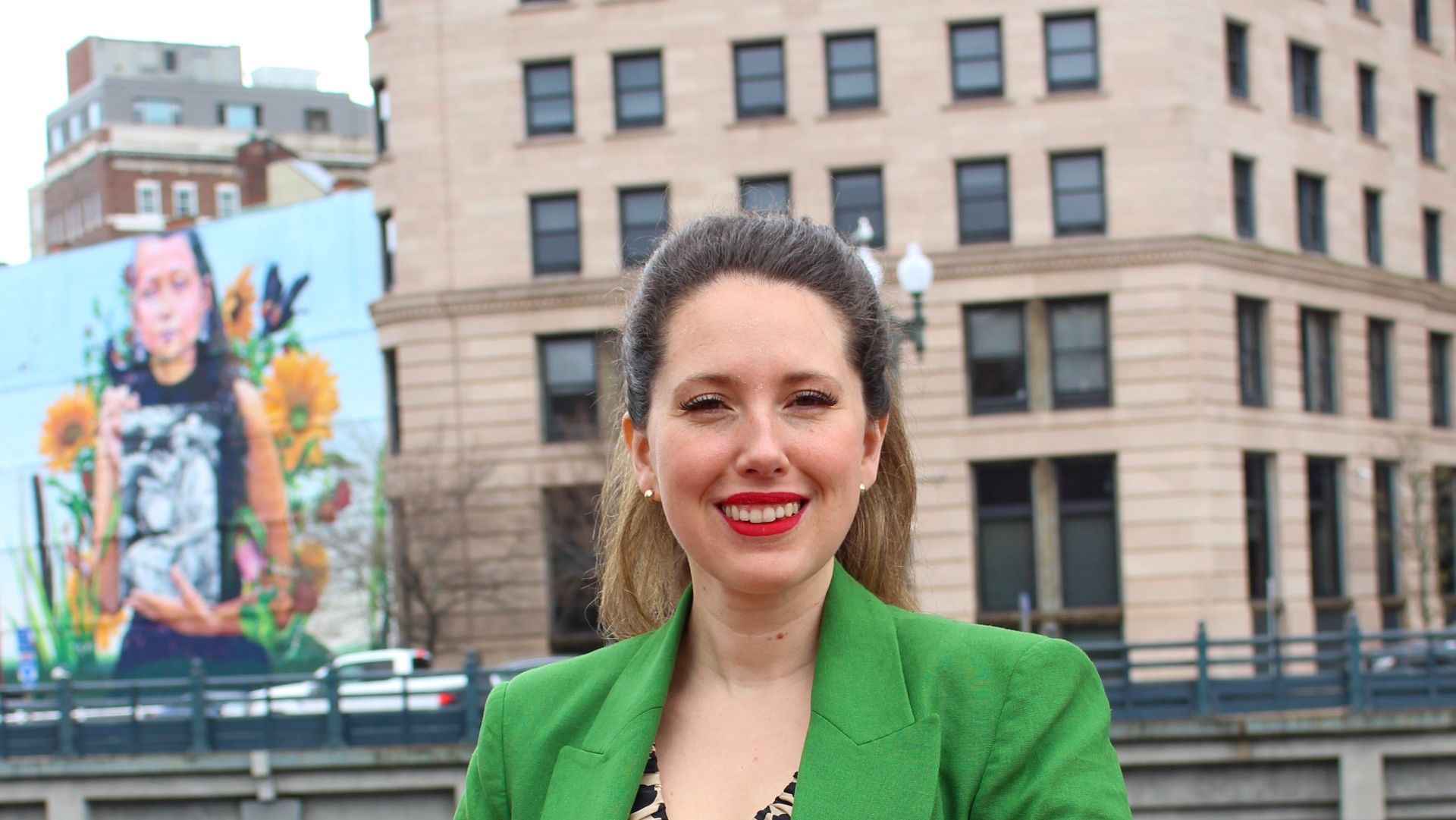At a time when Latinx communities are shaping the cultural and social fabric of the United States, the National Gallery of Art’s commitment to curating Latinx art is not just timely—it’s essential. Among the national leaders of this effort is Temple University alum Natalia Ángeles Vieyra, TYL ’21, the newly appointed associate curator of Latinx art for modern and contemporary art.
With Vieyra’s expertise and vision, the Washington, D.C., gallery embraces the diversity that defines modern America, bringing Latinx voices, histories and artistic expressions into the national spotlight. Her work in the newly created position highlights the vital contributions of Latinx artists and fosters dialogue, representation and a deeper understanding of complex narratives that have long been underrepresented in mainstream art institutions.
“We plan to incorporate Latinx art and culture into every aspect of the National Gallery’s offerings, from exhibitions to public programming, acquisitions and community outreach. I think that representation is everything, and I hope that members of the Latinx community will feel that their stories and experiences are meaningfully represented on the national stage and that visitors of all backgrounds will appreciate the contributions of Latinx artists to our shared cultural heritage,” said Vieyra, who is of Mexican descent.
Vieyra, who recently moved to Baltimore, said that her new position originated as part of the Advancing Latinx Art in Museums initiative, with the support of the Mellon, Ford, Getty and Terra foundations. Her graduate studies at the Tyler School of Art and Architecture at Temple allowed her to study art history with leading scholars, curators and artists while pursuing her master’s degree and PhD. She met E. Carmen Ramos, the chief curatorial and conservation officer at the National Gallery, when Ramos came to North Philadelphia to speak at Tyler at the invitation of faculty member Erin Pauwels. While at Tyler, Vieyra was inspired by faculty members Roberto Lugo, a ceramicist, and Pepón Osorio, the Laura H. Carnell Professor of Community Art at Temple, who is known for his powerful, large-scale multimedia installations that merge conceptual art and community dynamics.
"Natalia Ángeles Vieyra exemplifies what we strive for at the Tyler School of Art and Architecture—deep intellectual curiosity, a commitment to inclusivity and a passion for elevating underrepresented voices. Her role as associate curator of Latinx art at the National Gallery of Art is a testament to her vision and dedication, and we are incredibly proud of the impact she is making in the art world. She is advancing the visibility of Latinx artists and shaping the narrative of American art for future generations," said Dean Susan Cahan of the Tyler School of Art and Architecture.
Entering a field that has historically marginalized many groups has presented some challenges, but Vieyra says that the gallery has been successful in its Latinx acquisitions.
“I think that institutional legitimization and acceptance has been a perennial challenge for the field of Latinx art, but I think that we are in the middle of a very exciting moment in which there is a lot of energy and momentum around Latinx artists, and I feel I have a responsibility to seize the moment to convert that energy into lasting institutional change,” she said.
In August, The National Gallery announced it had acquired over 40 significant works by contemporary Latinx and Latin American artists of different generations, including Luis Cruz Azaceta, Ken Gonzales-Day, Guadalupe Maravilla, Michael Menchaca, Abelardo Morell, Sophie Rivera, Joseph Rodríguez and Rafael Soriano. “Spanning photography, painting, sculpture and mixed media, these works demonstrate the National Gallery’s commitment to artistic excellence and support our goal to build a collection that reflects and attracts the nation and its global connections,” the announcement said.
Vieyra envisions her role as influencing the broader art community, particularly in increasing representation and visibility for Latinx artists. Vieyra’s drive, coupled with the gallery’s acquisition of significant Latinx and Latin American works, underscores the essential role of Latinx art in shaping America’s cultural landscape.
“I think that including Latinx artists in the programming of the National Gallery of Art, whether through exhibitions, public programming or acquisitions, is an affirmation that Latinx art is U.S. art, is American art, and will by their inclusion increase the visibility and representation of Latinx artists throughout the broader art community,” she said.

